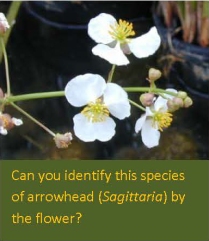During my junior year Field Biology course at the University, I had my first introduction to a basic tenet: field biology isn’t always pretty (or comfortable or clean or fun) but it will always have a purpose. Each friday this summer, I am reminded of that tenet, and smile under rumpled straw hat, now partially colored from marker dye.
We (Cullen, myself, willing Team members and Kelly, the Park Natural Resource Ranger) have made a commitment to treating vaseygrass in the restoration areas. While I never expected to be pleased by something dying, I find myself feeling vindicated and pleased by our eradication efforts. Vasey Grass or vaseygrass, Paspalum urvillei (http://www.texasinvasives.org/) is a South American perennial grass which was accidentally introduced near New Orleans in 1883 per the USDA 1925 Farmers Bulletin (http://digital.library.unt.edu/ark:/67531/metadc1769/m1/26/). At that time, Vasey grass was considered an important secondary forage species in pastureland partially because it had spread and established well in the region, and it has a remarkable “ability to grow in wet land and survive severe drought.” However, now this noxious bunch grass presents a serious threat to pastures and conservation lands alike, as evidenced by studies identifying appropriate management techniques to control vaseygrass (https://www.crops.org/publications/cs/abstracts/45/5/2038).
For all the reasons cited above, we have made our summer mission to eradicate what we can of this weed—given that the wetlands are dry and we can easily access all areas. To date, we have completed our treatment for all 48 acres of Phase 3, and we are currently planning our “attack” of Phase 2. So, when the straps of the backpack sprayers bite into my shoulders, I remember that the work is what matters and keep going. We have more acres (over 70) left to treat and thankfully we have a new 45-gallon sprayer tank fitted with two nozzles to assist our mission. I personally am looking forward to the continued eradication and am equally hopeful of its success.
(The pictures above are of Cullen Ondracek, giving the vaseygrass the evil eye during a reconn, and on a different day, spraying with herbicide)
References:
U.S. Department of Agriculture. (1925). Farmers Bulletin 1433: “Cultivated grasses of Secondary Importance”. Washington DC. U.S. Department of Agriculutre. (pg: 22-26).
Newman, Y.C. and L. E. Sollenberger. (2005) “Grazing Management and Nitrogen fertilization effects on Vaseygrass persistence in limpograss pasturelands.” Crop Science, 45(5), 2038-2043.







